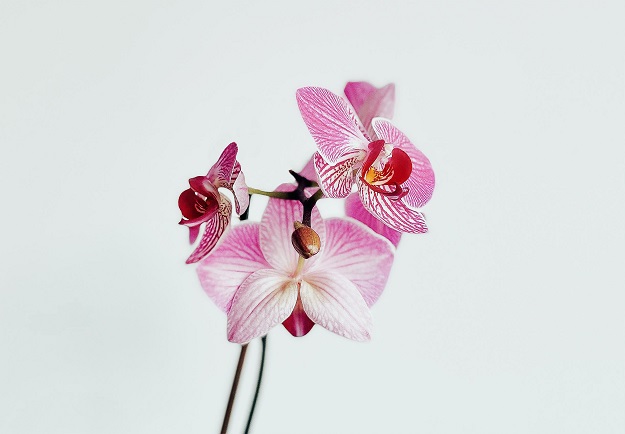
Watering…. Fertilizing….Watering…. then fertilizing again can be as complicated as one wants it to be. However, since most of our lives are complicated enough, let’s make all this as simple as possible:
Water when the plant is dry and fertilize once a month…….How’s that?
H2O
Seriously, this is sufficient for any collection with a few considerations. In general, during the warm summer months of June, July and August plants should receive copious amounts of water and fertilizer to promote rapid growth, initiate the bloom cycle then prepare for bloom and the winter dry period. Water in and of itself is also vitally important. City water from a municipal source is treated with Chlorine and in high enough concentrations will eventually kill an Orchid plant. The installation of an in-line filter to your greenhouse (or if possible, the installation of a Reverse Osmosis System) will mitigate, if not totally eliminate any harmful chemicals from reaching your plants. Conversely, water from a natural source, such as a well, will typically have no additives whatsoever but could contain certain minerals which may or may not affect your plants. Best to have a sample tested to be certain. There are fertilizers on the market formulated especially for well water users (MSU Fertilizers, Michigan State University created, for example) specifically designed for well water that often lacks essential minerals for growth.
N-P-K
Out of the literally hundreds of commercial fertilizers on the market in which to choose from, it again comes down to what works best for you. However, some Orchids require a definite change in formulation in the cooler fall months. For example, to help initiate spikes on Cymbidiums at the proper time and to help cymbidiums flower, apply during the growth season (spring through late summer) a high nitrogen fertilizer (such as 30-10-10). In late summer, use a high-phosphorus, blossom-booster fertilizer (such as 10- 30-20), to help form bloom spikes. Fertilize at full strength every week to two weeks. In winter, fertilize once a month. As an alternative to liquid fertilizers, there are several brands of dry coated and pelleted fertilizers available. Simply applied to the surface of the potting medium, small amounts of fertilizer is released at each watering giving the plant a slow and steady application of fertilizer.
One last note; for those that bring some of their plants outdoors for the summer months, be cautious about reintroducing them back into your greenhouse. Check for insects, especially scale that can hide in unnoticeable places. Undetected they can quickly infest an entire collection.
Tom Capranica has been a hobby collector and hybridizer of Orchids for over 20 years, and an active member of the American Orchid Society (AOS) for about the same length of time. He grows his Orchids in a 450 sq. ft. climate-controlled greenhouse, containing over 300 plants of various genera, primarily Cattleya.
Related Articles & Free Email Newsletter
7 Ways to Guarantee Healthy Orchids
How to Divide and Conquer Your Orchids




Comment here